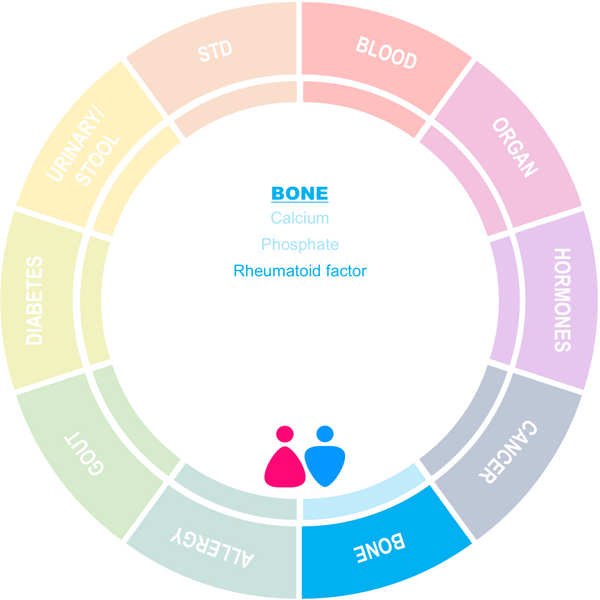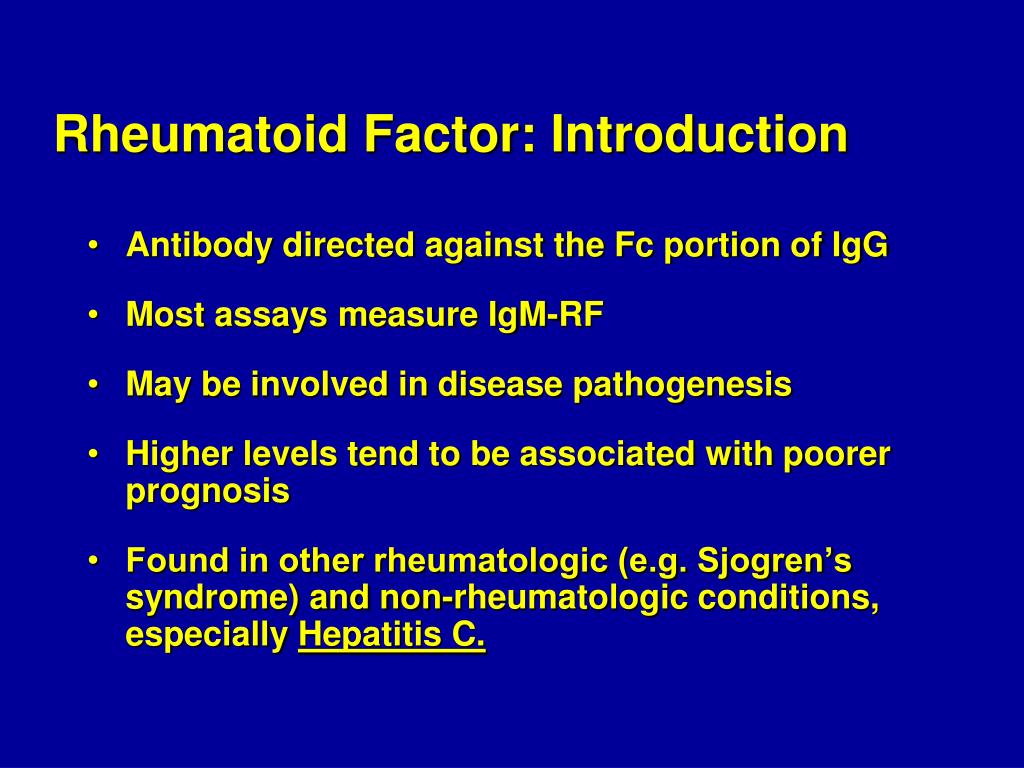
(2018) Understanding rheumatoid arthritis lab tests and results. Is seronegative rheumatoid arthritis true rheumatoid arthritis? A nationwide cohort study. Influence of age and sex on disease course and treatment in rheumatoid arthritis. The performance of anti-cyclic citrullinated peptide assays in diagnosing rheumatoid arthritis: a systematic review and meta-analysis. Quality control and interest of the determination of anti-CCP antibodies and rheumatoid factor in the diagnosis of rheumatoid arthritis.


Understanding the effects of rheumatoid arthritis. You can learn more about how we ensure our content is accurate and current by reading our editorial policy. We link primary sources - including studies, scientific references, and statistics - within each article and also list them in the resources section at the bottom of our articles. Medical News Today has strict sourcing guidelines and draws only from peer-reviewed studies, academic research institutions, and medical journals and associations. Ultrasounds or X-rays: Imaging tests can help identify inflammation or show signs of wear and tear or damage (erosions) in the joints.Joint aspiration: For this test, doctors pull fluid from the joints to analyze it for white blood cells, crystals, or infectious organisms.Cells that fall faster indicate inflammation, as well as high levels of proteins in the blood. Erythrocyte sedimentation rate (ESR): The ESR test measures how fast red blood cells settle to the bottom of a container.Antinuclear antibody (ANA) panel: An ANA panel tests for the presence of autoantibodies directed at particles inside cells, which are a sign of autoimmune conditions.Complete blood count (CBC): A CBC test looks at both red and white blood cell counts, which may help identify anemia, infection, and any secondary effects of the underlying condition.Higher levels of CRP indicate inflammation.

C-reactive protein (CRP) tests: CRP tests measure a reactive protein that the liver creates.According to some research, it is present in about 90-96% of people with RA. Most people who undergo an RA latex turbid test can also expect to have an anti-cyclic citrullinated antibody (anti-CCP) test, which is a blood test that checks for the levels of anti-CCP.Īnti-CCP is an antibody that is more specific for RA. If a person’s results show only a slightly higher value than normal, doctors will probably order additional tests. They may also order imaging studies, including X-rays of hands and feet, before making a diagnosis. If your level is lower than 20 U/mL, your results are considered negative and you likely dont have RA. The RA latex turbid test alone cannot give a clear enough picture to make a diagnosis, so doctors will usually use other tests in the initial evaluation. Results are given in units per milliliter (U/mL).


 0 kommentar(er)
0 kommentar(er)
